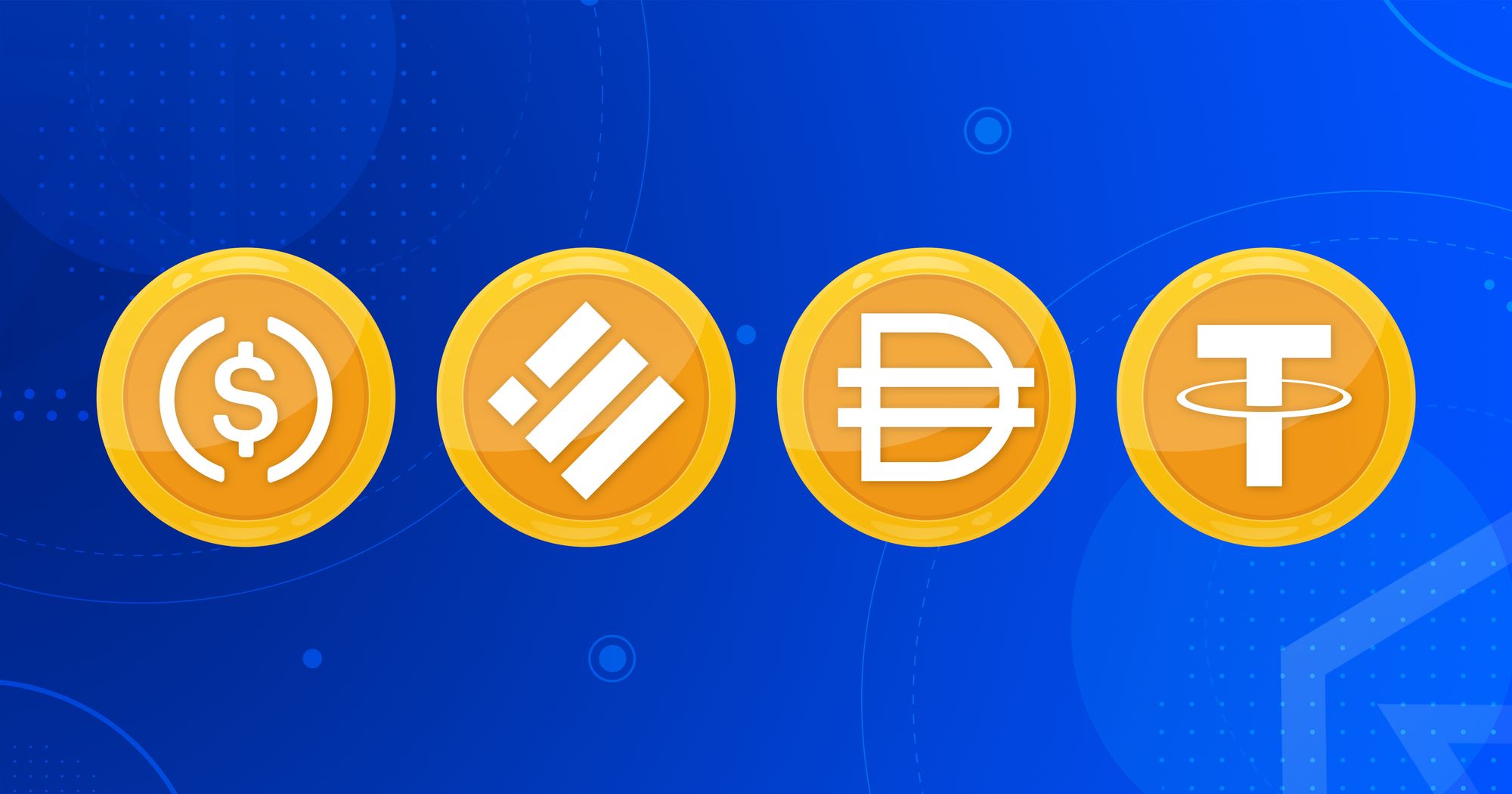Stablecoins are digital currencies linked or pegged to a "stable" reserve asset, such as the US dollar or any other national currency. Compared with unpegged cryptocurrencies like Bitcoins, stablecoins are called so as they significantly reduce volatility. As a result, they enable investors to generate returns on their crypto assets while avoiding the negative impact of market volatility in the DeFi market. In the crypto economy, stablecoins have also become popular mechanisms to store and trade values.
Stablecoins combine the stability of traditional assets with the flexibility of digital assets. They bridge the gap between cryptocurrency and fiat currency because their prices are pegged to an underlying reserve asset such as the US dollar or gold. They are neither issued nor overseen by a central authority.
Why are Stablecoins important?
1. In a volatile market, stablecoins provide stability.
Stablecoins assure risk-averse buyers and sellers that the value of their crypto assets will neither grow nor fall unexpectedly.
Stablecoins give crypto investors and traders the same stability that fiat currency offers in traditional markets. When market volatility increases, traditional investors may choose to dedicate sections of their portfolios to cash or treasury bonds, while crypto investors can shift to stablecoins.
2. Stablecoins help in onboarding beginners to the crypto ecosystem.
Stablecoins are a rapid and effective method for crypto investors to move fast in the crypto market. In an unstable market, crypto investors and traders frequently turn to stablecoins. Stablecoins allow them to stay in the cryptocurrency market while moving quickly between trades without waiting days for fiat money transfers.
3. Stablecoins increase the overall liquidity and volume in the market.
Stablecoins' stable and efficient character instils confidence in the crypto industry. As a result, more people are willing to participate in the market. Trading volume and market capitalization have increased due to the increasing market involvement.
It increases liquidity, making the cryptocurrency market more efficient. Increased efficiency also leads to more accurate asset pricing, resulting in fairer asset prices, tighter bids and ask spreads, and tighter bids and ask spreads.
4. Earning interest using stablecoins.
Upon investing in stablecoins, there are several simple ways to generate interest (usually higher than what a bank would offer). Stablecoins allow traders and investors to earn interest by lending and staking. Borrowers can pay you interest payments if you lend stablecoins to them.
The process of confirming crypto transactions is known as staking. We can earn rewards by putting our coins on the line. In addition, you can potentially make more money if you stake more coins.
5. Trade and save assets quickly using Stablecoins.
Stablecoins don't require a bank account, and they're simple to transfer with quick processing and low transaction costs. Stablecoins can also be swiftly moved overseas, even to regions where the US dollar is difficult to come by or where the local currency is volatile.
Check out Some Popular Stablecoins
Stablecoins are classified based on the underlying collateral structure, like fiat-backed, crypto-backed, commodity-backed, or algorithmic.
Tether(USDT)
Tether (USDT) is the first Stablecoin to exist. It gets pegged to the US dollar. In 2014, entrepreneur Reeve Collins, Bitcoin investor Brock Pierce, and developer Craig Sellers developed USDT as the Real coin. It has since surpassed Bitcoin as the most valuable Stablecoin in market capitalization. Tether tokens get issued by Tether Limited, which is managed by the owners of the Bitfinex cryptocurrency exchange. Tether gets supported by fiat and commercial paper reserves.
Binance USD(BUSD)
Paxos and Binance created the BUSD stablecoin. It gets backed by the US dollar(fiat-backed). One of the most significant characteristics of BUSD is that one unit of BUSD equals one US dollar. To support this value, Paxos owns a quantity of US dollars equivalent to the entire supply of BUSD. As a result, the price of the Stablecoin follows the value of the US dollar. Furthermore, BUSD delivers a monthly audited report of reserves by following strict regulatory criteria to maintain user assets protection, stability, and safety.
Conclusion
Stablecoins are an essential aspect of the crypto economy since they provide merchants and investors with a secure and trustworthy medium of exchange. Furthermore, stablecoins play a significant part in bolstering the crypto economy, especially when the market is down.
In light of the UST catastrophe, investors are questioning how successful a stablecoin will be in its ability to provide liquidity to the crypto market. Some crypto market participants trust these structures without investigating them thoroughly. Investors should conduct due diligence and understand the risks and exposures involved.
It will, however, open the door for more stablecoins to enter the scene and new algorithmic experiments. "Survival of the fittest" is how stablecoin competition gets described. It's a competitive environment that's always coming up with new innovative ideas.





